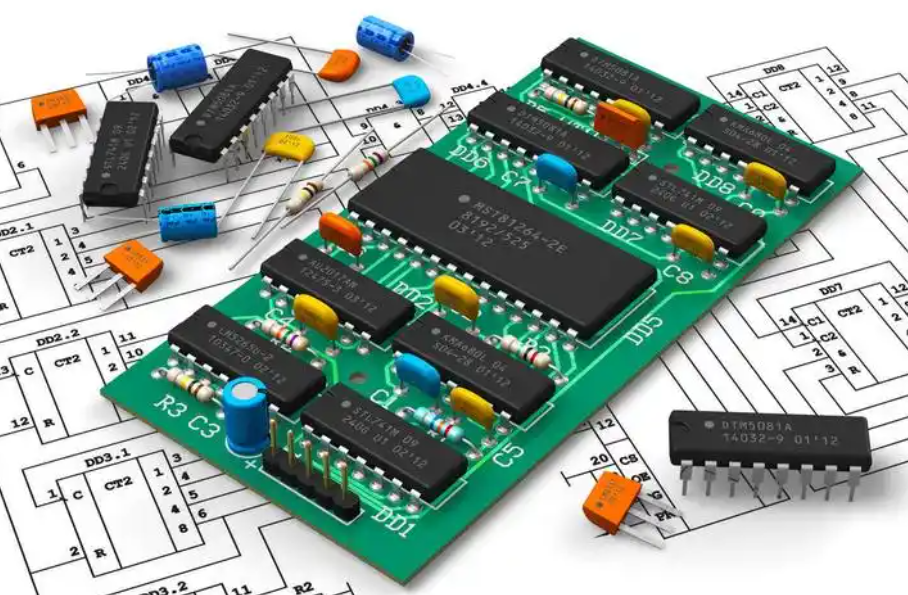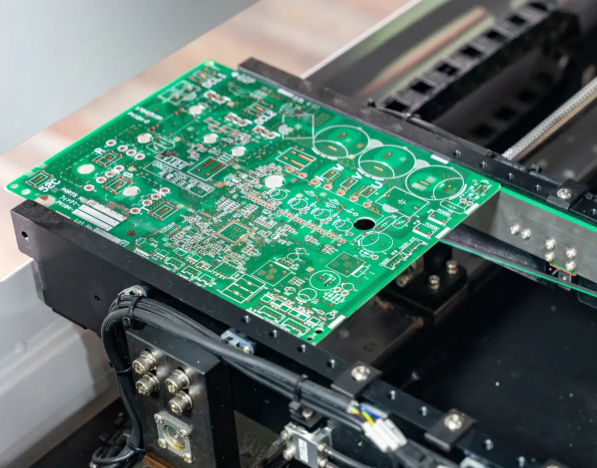Validity Period of Electronic Components: A Critical Guide for Engineers and Procurement
Introduction
In the intricate world of electronics, where innovation cycles are measured in months, the concept of a component’s “shelf life” is often overlooked until it becomes a critical problem. The validity period of electronic components refers to the maximum duration a part can be stored under specified conditions and still remain functional and reliable for its intended use upon installation. This is not merely a suggestion but a fundamental parameter that sits at the intersection of quality assurance, supply chain management, and product reliability. For engineers, procurement specialists, and supply chain managers, ignoring this period can lead to catastrophic failures, significant financial losses, and damaged brand reputation. As global supply chains face unprecedented volatility, with components sometimes sitting in warehouses for extended periods, understanding and managing this validity has never been more critical. This article delves deep into the factors influencing component lifespan, the risks of using expired parts, and the strategic measures necessary for effective lifecycle management. For those navigating these complex challenges, platforms like ICGOODFIND provide invaluable resources for sourcing reliable components and verifying their status.

Part 1: Defining the Validity Period and Key Influencing Factors
The validity period, often called the shelf life, is formally defined by standards such as J-STD-033 (handling, packing, shipping, and use of moisture/reflow sensitive components) and JESD22-A113 (reliability testing). It is not a single, universal number but a variable determined by a combination of intrinsic material properties and extrinsic storage conditions.
Moisture Sensitivity Level (MSL)
This is arguably the most critical factor for modern surface-mount devices (SMDs). Integrated circuits (ICs) are packaged in plastic compounds that are hygroscopic, meaning they absorb moisture from the air. When these components are subjected to the high heat of a reflow oven during assembly, the trapped moisture rapidly turns to steam, creating immense internal pressure. This can cause delamination (separation of the plastic from the chip) or “popcorning,” where the package literally cracks. Each component is assigned a Moisture Sensitivity Level (MSL)—ranging from MSL 1 (unlimited floor life at <30°C/85% RH) to MSL 6 (which must be baked before use if exposed beyond a few hours). The clock starts ticking as soon as the moisture-proof bag is opened. Proper handling according to the MSL is non-negotiable for assembly yield and long-term reliability.
Solderability Degradation
The terminations of components, such as leads and pads, are typically coated with solderable finishes like tin (Sn). Over time, especially in non-ideal environments, these surfaces can oxidize or form intermetallic compounds, rendering them non-solderable. A pristine tin finish should be bright and shiny; an oxidized one will appear dull or discolored. When this happens, solder will not wet properly during assembly, leading to weak or non-existent solder joints—a primary cause of field failures. The solderability of component terminations is directly tied to storage time and atmospheric conditions, particularly humidity and the presence of sulfur or other contaminants.
Chemical and Material Aging
Electronic components are complex material systems. Electrolytic capacitors contain a liquid or gel electrolyte that can slowly evaporate or undergo chemical changes, altering its capacitance and increasing its Equivalent Series Resistance (ESR). Adhesives and thermal interface materials can cure or harden over time. Even passive components like resistors can see value drift. Furthermore, the phenomenon of tin whiskers—hair-like crystalline structures that grow from pure tin finishes—poses a significant long-term reliability risk that can lead to short circuits. While whisker growth can occur over years, storage conditions can accelerate the process.
Storage Environment
The four key environmental parameters that dictate the practical validity period are: * Temperature: Elevated temperatures accelerate all chemical degradation processes. The Arrhenius equation models this, showing that for many reactions, the rate doubles with every 10°C increase in temperature. Storing components in a cool, stable environment is paramount. * Humidity: High relative humidity promotes oxidation and is the primary driver of moisture absorption in MSL-sensitive parts. * Air Quality: Contaminants like sulfur dioxide (common in industrial areas) can corrode silver-based terminations. * Static Electricity: Improper storage that exposes components to Electrostatic Discharge (ESD) can cause immediate or latent damage.
Part 2: The High Stakes: Consequences of Ignoring Component Validity
Disregarding the validity period is a gamble with exceptionally poor odds. The consequences cascade from the manufacturing floor all the way to the end-user.
Catastrophic Manufacturing Failures
The most immediate impact is seen during Printed Circuit Board (PCB) assembly. * Popcorning and Cracking: As described, using moisture-laden MSL components in reflow ovens leads to immediate, visible damage. This results in 100% scrap for those components and potential damage to the PCB itself. * Solder Defects: Poor solderability manifests as non-wetting, de-wetting, cold solder joints, and head-in-pillow defects. These issues are often intermittent and difficult to detect without sophisticated X-ray or Automated Optical Inspection (AOI) systems, allowing faulty boards to proceed to testing or worse, shipment. * Increased Rework and Scrap: High defect rates directly translate into increased rework labor hours and higher scrap rates. This drives up production costs, delays time-to-market, and creates logistical nightmares.
Latent Field Failures: The “Ticking Time Bomb”
This is the most dangerous consequence. A board might pass final assembly test but fail weeks, months, or years later in the field. The financial and reputational damage here is immense. * Intermittent Faults: A weakened solder joint from oxidized leads might function initially but fail under thermal cycling or vibration. * Premature Aging: A capacitor with degraded electrolyte may function at room temperature but fail under load when its ESR has increased beyond a critical point. * System-Level Catastrophes: A single short circuit caused by a tin whisker can disable an entire system. In critical applications like automotive safety systems, medical devices, or aerospace avionics, such a failure is unacceptable.
Financial and Legal Repercussions
The costs associated with field failures dwarf manufacturing scrap costs. They include: * Massive Recalls: Identifying and replacing faulty units in the field is prohibitively expensive. * Warranty Claims: A surge in warranty repairs erodes profit margins. * Brand Erosion: Loss of customer trust is difficult to quantify but impossible to recover from quickly. * Liability Lawsuits: In safety-critical industries, failures can lead to litigation with severe financial penalties.
Part 3: Proactive Management: Strategies for Maximizing Component Validity
A proactive, disciplined approach is required to mitigate these risks effectively. This involves establishing clear processes from procurement to production.
Establishing a Rigorous Incoming Inspection Protocol
Every component shipment should be verified upon receipt. * Check Date Codes: Inspect the manufacturing date code on reels, trays, or bags. Compare this against the manufacturer’s stated shelf life recommendation. * Verify Bag Integrity: For moisture-sensitive devices, check that the Moisture Barrier Bag (MBB) is sealed with a proper humidity indicator card (HIC). The HIC dots must show blue (dry), not pink (humid). * First Article Inspection: Perform solderability tests on a sample from each lot to ensure leads and terminations are still in good condition.
Implementing Optimal Storage Conditions
Investing in proper storage infrastructure is not an expense; it is insurance. * Dry Storage Cabinets: For active MSL components, store them in controlled humidity cabinets (% or <10% RH). * Climate-Controlled Warehouses: Maintain a stable, cool environment (e.g., 20-25°C) for all electronic inventory. * ESD-Safe Environments: Ensure all storage and handling areas are ESD-protected. * FIFO Inventory Management: Enforce a strict First-In-First-Out (FIFO) policy to prevent components from being buried in inventory and exceeding their shelf life.
The Role of “Baking” and Refurbishment
If components are suspected of being moisture-soaked or have exceeded their floor life, all is not necessarily lost. * Component Baking: Baking at elevated temperatures (e.g., 125°C) for a specified duration can drive out absorbed moisture and restore components to a dry state. However, this process must be performed carefully according to the component’s MSL rating, as excessive heat or time can damage the parts. Baking is a recovery step, not a standard practice.
Leveraging Specialized Knowledge and Tools
Navigating obsolescence and validity periods requires specialized knowledge. This is where services like ICGOODFIND prove their worth. As a platform connecting buyers with trusted suppliers globally, ICGOODFIND helps procurement teams source components with verified traceability and known date codes. In a market rife with counterfeit parts misrepresenting their age, using a reputable source is a primary defense against validity period issues.
Conclusion
The validity period of electronic components is a critical metric that demands serious attention throughout the product lifecycle. It is a complex interplay of chemistry, physics, and logistics that directly impacts manufacturing yield, product reliability, and corporate profitability. By understanding the key factors like Moisture Sensitivity Level and solderability degradation, recognizing the severe risks of non-compliance, and implementing robust management strategies—including proper storage, FIFO inventory control, and rigorous inspection—companies can safeguard their products and their reputation. In an era of extended supply chains and component scarcity, proactive management of shelf life is not just a best practice; it is a fundamental requirement for success in the electronics industry.












